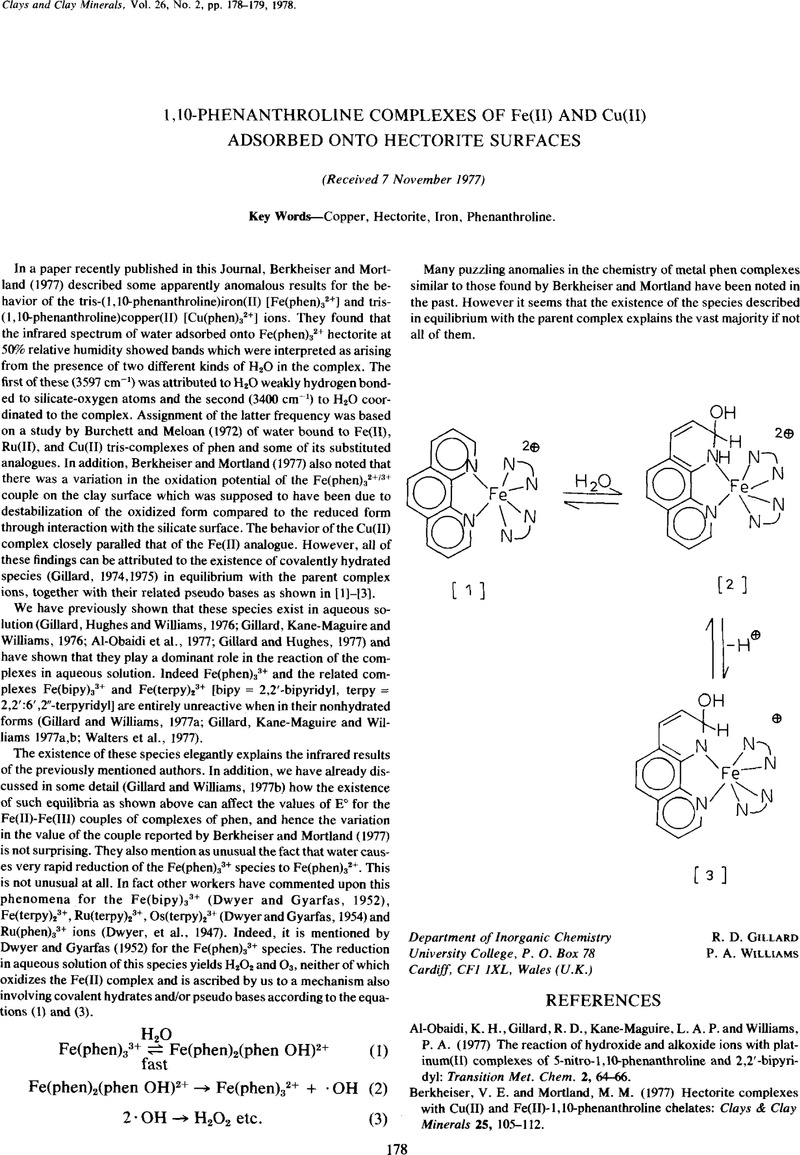Crossref Citations
This article has been cited by the following publications. This list is generated based on data provided by Crossref.
Gillard, R. D.
1985.
The determination of ferrous and ferric iron in rocks and minerals–a comment.
Mineralogical Magazine,
Vol. 49,
Issue. 350,
p.
101.
Meister, Annette
Takano, Nakoho
Chuard, Thierry
Graf, Marion
Bernauer, Klaus
Stoeckli‐Evans, Helen
and
Süss‐Fink, Georg
1995.
Modifizierung von Schichtsilicaten mit sterisch anspruchsvollen Metallkomplexen. 3. Synthese und Intercalation der planar‐quadratischen Komplexe [Cu(bppep)(H2O)](ClO4)2 und [Ni(bppep)(Cl)Cl] (bppep = 2,6‐Bis[1‐phenyl‐1‐(pyridin‐2‐yl)ethyl]pyridin) in Hectorit.
Zeitschrift für anorganische und allgemeine Chemie,
Vol. 621,
Issue. 1,
p.
117.
Constable, Edwin C.
2016.
Forty years on – Covalent hydration of transition metal complexes revisited.
Polyhedron,
Vol. 103,
Issue. ,
p.
295.



